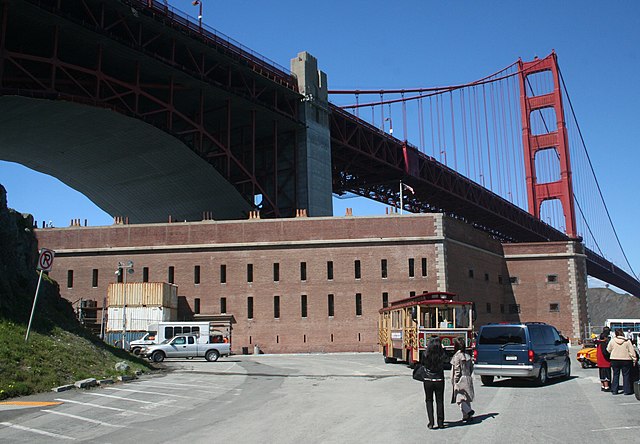Several boards have been appointed by US presidents or Congress to evaluate the US defensive fortifications, primarily coastal defenses near strategically important harbors on the US shores, its territories, and its protectorates.
Board of Fortifications report, 1886
Endicott Period battery with two guns on disappearing carriages
10-inch disappearing gun at Battery Granger, Fort Hancock, New Jersey
Fire control searchlight at Fort Baker, California
Seacoast defense in the United States
Seacoast defense was a major concern for the United States from its independence until World War II. Before airplanes, many of America's enemies could only reach it from the sea, making coastal forts an economical alternative to standing armies or a large navy. After the 1940s, it was recognized that fixed fortifications were obsolete and ineffective against aircraft and missiles. However, in prior eras foreign fleets were a realistic threat, and substantial fortifications were built at key locations, especially protecting major harbors.
The outer works of Fort McHenry in Baltimore harbor, although built in the 1860s, are broadly similar to early First and Second System forts built prior to the War of 1812, with low earthworks, although mounting much larger cannon and reinforced with masonry. The cannon are 8-inch converted rifles (lined down from 10-inch Rodman guns) and a 15-inch Rodman gun, typical of the post-Civil War era.
The Statue of Liberty is built on top of Fort Wood of the Second System
50-pounder Model 1811 Columbiad (7.25 inch or 184 mm bore) and center-pivot mounting designed by George Bomford as an experimental coastal defense gun. This gun was built in 1811 as a component of the Second System. Photographed in Clear Lake, Wisconsin.
Fort Point - San Francisco - example of a mid-1800s Third System fort








